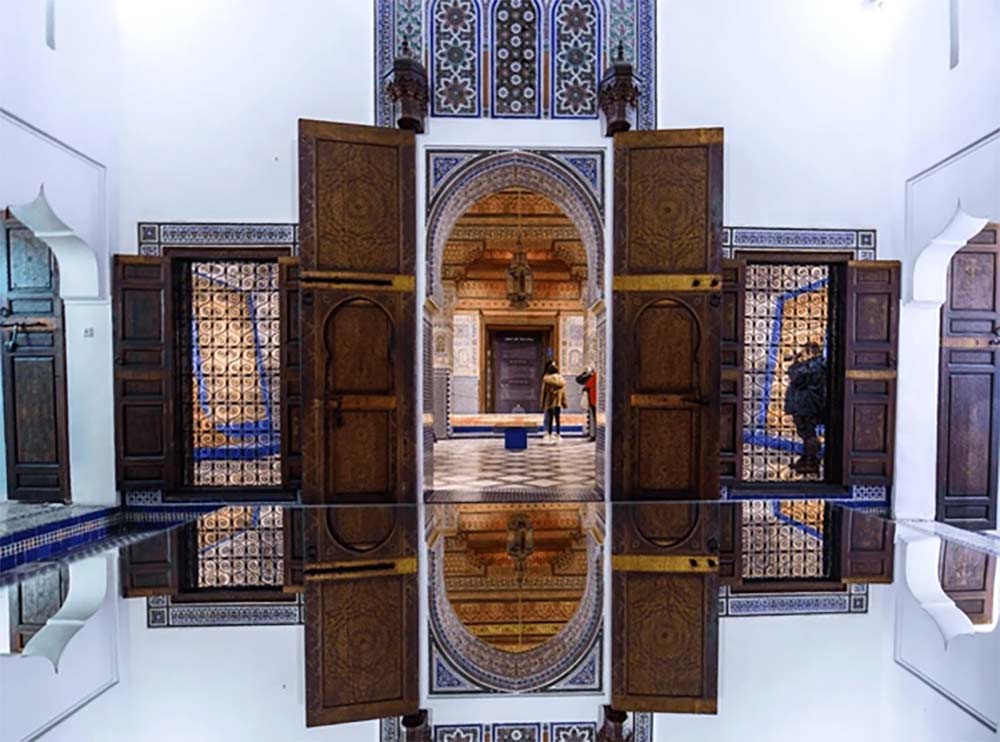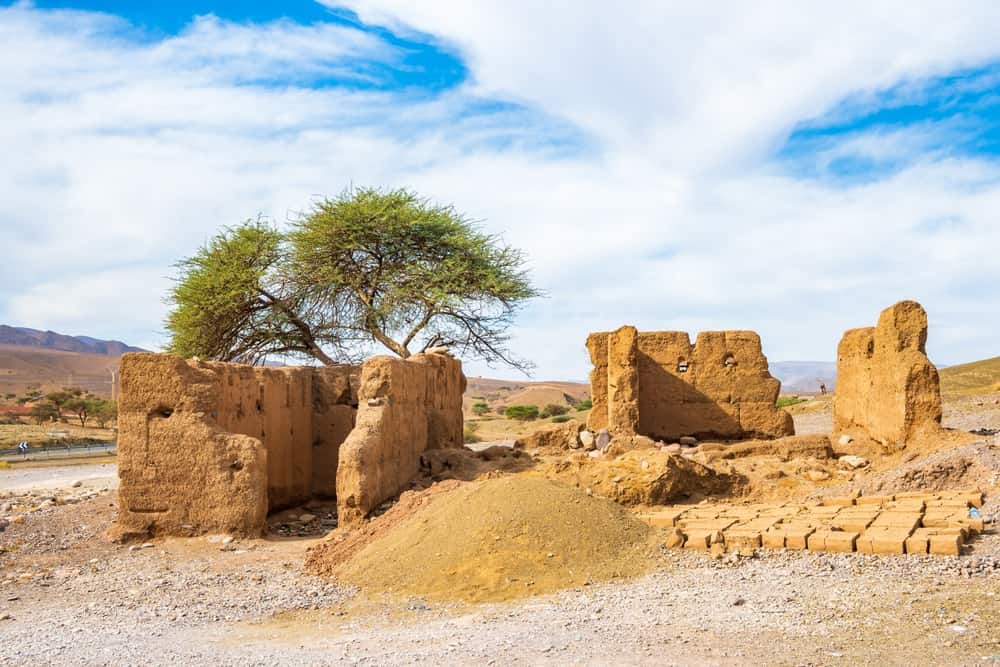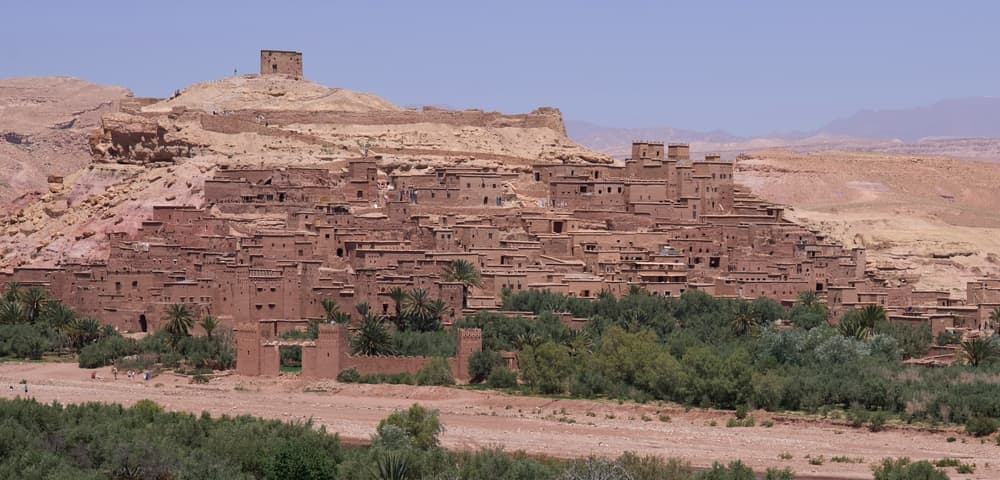Morocco is a place where ancient tales and modern life blend seamlessly. Walking through streets where sultans once ruled. You can explore old cities with winding alleys and discover hidden gems around every corner. Morocco’s museums hold treasures from centuries past. Historic landmarks stand tall, telling stories of bygone eras. The imperial cities, with their grand palaces and bustling markets, offer a glimpse into Morocco’s royal past. Many of these places are so special they are recognized as UNESCO World Heritage Sites.
But Morocco is more than just its famous sites. The country’s culture is a tapestry of influences from Africa, Europe, and the Middle East. Each region has its traditions, from music and dance to food and crafts. By exploring Morocco, you get to experience this cultural diversity firsthand.
Museums in Morocco

Exploring museums is a great way to find Morocco’s rich history and vibrant culture. Each museum offers a unique glimpse into different aspects of Moroccan life, from ancient artifacts to modern art. Whether you’re in a bustling city or a quiet mountain village, Morocco’s museums are filled with fascinating exhibits that tell the story of this diverse and beautiful country.
Must-Visit Museums
Morocco is home to many incredible museums. Each one tells a different story about the country’s rich past. The Museum of Moroccan Arts in Marrakech is a must-see. It showcases beautiful ceramics, carpets, and jewelry. These items reflect Morocco’s artistic heritage and cultural diversity.
In Fes, the Dar Batha Museum is a hidden gem. This museum is housed in a lovely palace and features a collection of traditional Moroccan arts and crafts. You can see intricate wood carvings, colorful textiles, and delicate pottery. Each piece tells a story of the region’s craftsmanship and history.
For a glimpse into the life of the indigenous Berber people, visit the Berber Museum in the High Atlas Mountains. This museum highlights the unique culture and traditions of the Berber community. You can explore exhibits that display traditional Berber clothing, tools, and household items. It’s a great way to learn about the daily life and customs of Morocco’s original inhabitants.
Unique Exhibitions and Artifacts
Morocco’s museums also host special exhibitions that change regularly. These exhibitions often focus on specific themes or periods in Moroccan history. For example, the Museum of Contemporary Art in Rabat frequently features modern Moroccan artists. This gives visitors a chance to see how Morocco’s artistic expression has evolved.
In Marrakech, the Yves Saint Laurent Museum showcases the designer’s connection to Morocco. You can see his famous creations and learn about how Moroccan culture influenced his work. The museum also has a beautiful garden, perfect for a peaceful stroll.
At the Moroccan Jewish Museum in Casablanca, you can explore the rich history of Jewish communities in Morocco. The exhibits include religious artifacts, traditional clothing, and photographs. This museum is the only one of its kind in the Arab world and provides a unique perspective on Morocco’s diverse cultural heritage.
Historic Landmarks of Morocco

Morocco’s historic landmarks are as diverse as its museums. They tell stories of ancient civilizations, royal dynasties, and architectural marvels. These landmarks are scattered throughout the country, each offering a unique glimpse into Morocco’s past.
Architectural Marvels
Morocco’s historic landmarks are true architectural phenomena. The Hassan II Mosque in Casablanca is one of the largest mosques on the earth. Its towering minaret and stunning mosaics are awe-inspiring. Visitors can take guided tours to learn about its construction and the significance of its design.
The Saadian Tombs in Marrakech are another must-see. These tombs date back to the 16th century and were only rediscovered in 1917. The intricate stucco and marble decorations are breathtaking. It’s a serene place that offers a glimpse into Morocco’s royal history.
Ancient Ruins
Morocco also boasts remarkable ancient ruins. The Roman ruins of Volubilis near Meknes are a testament to Morocco’s historical importance as a crossroads of civilizations. You can wander through the remains of grand buildings and mosaics that have survived for centuries. It’s like stepping back in time to when the Romans ruled this region.
Other significant ruins include the Chellah in Rabat. This ancient site was first a Phoenician settlement, then Roman, and later became a medieval Muslim necropolis. The layers of history here are fascinating to explore. The site is now a peaceful garden with remnants of its diverse past scattered throughout.
Imperial Cities of Morocco
The imperial cities of Morocco are a testament to the country’s rich history and royal heritage. These cities have been centers of power, culture, and trade for centuries. Each city has its own unique charm and a wealth of historical sites to explore.
The Imperial City of Fes
Fes is one of Morocco’s oldest cities and a UNESCO World Heritage Site. It’s famous for its ancient medina, which is the world’s largest car-free urban area. The narrow streets are filled with shops, mosques, and madrasas (schools). The University of Al Quaraouiyine, founded in 859, is one of the oldest continuously operating universities in the world. Visiting Fes is like walking through a living museum.
The Vibrant Marrakech
Marrakech is known for its vibrant atmosphere and historical significance. The city’s medina is bustling with life. You can visit the Bahia Palace, a beautiful 19th-century palace with stunning gardens and architecture. The Koutoubia Mosque, with its iconic minaret, is another landmark you can’t miss. In the evenings, the famous Jemaa el-Fnaa square comes alive with street performers, food stalls, and markets.
Meknes and Rabat
Meknes, known as the “Versailles of Morocco,” is another imperial city worth exploring. It’s home to the impressive Bab Mansour gate and the Royal Stables. The city was once the capital of Morocco and still holds much of its royal charm.
Rabat, the current capital, offers a blend of historic and modern attractions. The Royal Palace and the Hassan Tower are key sites. The city also has beautiful parks and gardens, making it a pleasant place to explore.
UNESCO World Heritage Sites
Morocco is proud to have several UNESCO World Heritage Sites. These sites are recognized for their cultural, historical, and architectural significance. They offer a fascinating look into the country’s past and are must-visit destinations for any traveler.

Medina of Marrakech
The Medina of Marrakech is a UNESCO World Heritage Site. It’s known for its historical and cultural significance. Walking through the medina, you’ll find vibrant markets, historic buildings, and lively squares. The blend of sights, sounds, and smells creates an unforgettable experience.
Ait Benhaddou
Ait Benhaddou is a fortified village that has been featured in many films and TV shows. It’s recognized by UNESCO for its well-preserved earthen buildings and unique architecture. The village offers a glimpse into the traditional life of southern Morocco. The views from the top are stunning, making it a favorite spot for photographers.
Medina of Essaouira
The Medina of Essaouira is another UNESCO site. This coastal city has a unique blend of Portuguese, French, and Berber architecture. The medina is known for its white-washed buildings with blue accents. It’s a great place to explore on foot, with many shops, cafes, and art galleries to visit. The city’s relaxed atmosphere and beautiful beaches make it a perfect getaway.
Planning Your Tour
Planning your tour of Morocco is an exciting part of the journey. Knowing the best times to visit and the tour options available can help you make the most of your trip.
Best Times to Visit
Morocco can be visited year-round, but the best times are spring (March to May) and fall (September to November). During these seasons, the weather is pleasant, making it ideal for sightseeing. Summers can be very hot, especially in the desert regions, while winters are mild but can be chilly in the mountains.
Tour Packages and Options
When planning your trip, there are many tour packages to choose from. You can opt for guided tours that cover multiple cities and attractions. These tours often include transportation, accommodations, and expert guides who provide in-depth knowledge about the sites you visit. There are also specialized tours focusing on specific interests, such as food, history, or adventure.
For a more personalized experience, consider a custom tour. These tours can be tailored to your interests and schedule. Whether you want to spend more time exploring the imperial cities or focus on visiting UNESCO sites, custom tours offer flexibility and a unique experience.
Conclusion
Morocco is a land of rich history and vibrant culture. From its fascinating museums and historic landmarks to its imperial cities and UNESCO World Heritage Sites, there’s so much to explore. Whether you’re wandering through ancient medinas or marveling at architectural wonders, each moment in Morocco is a journey through time. Plan your visit to discover the treasures of Morocco and create unforgettable memories.
